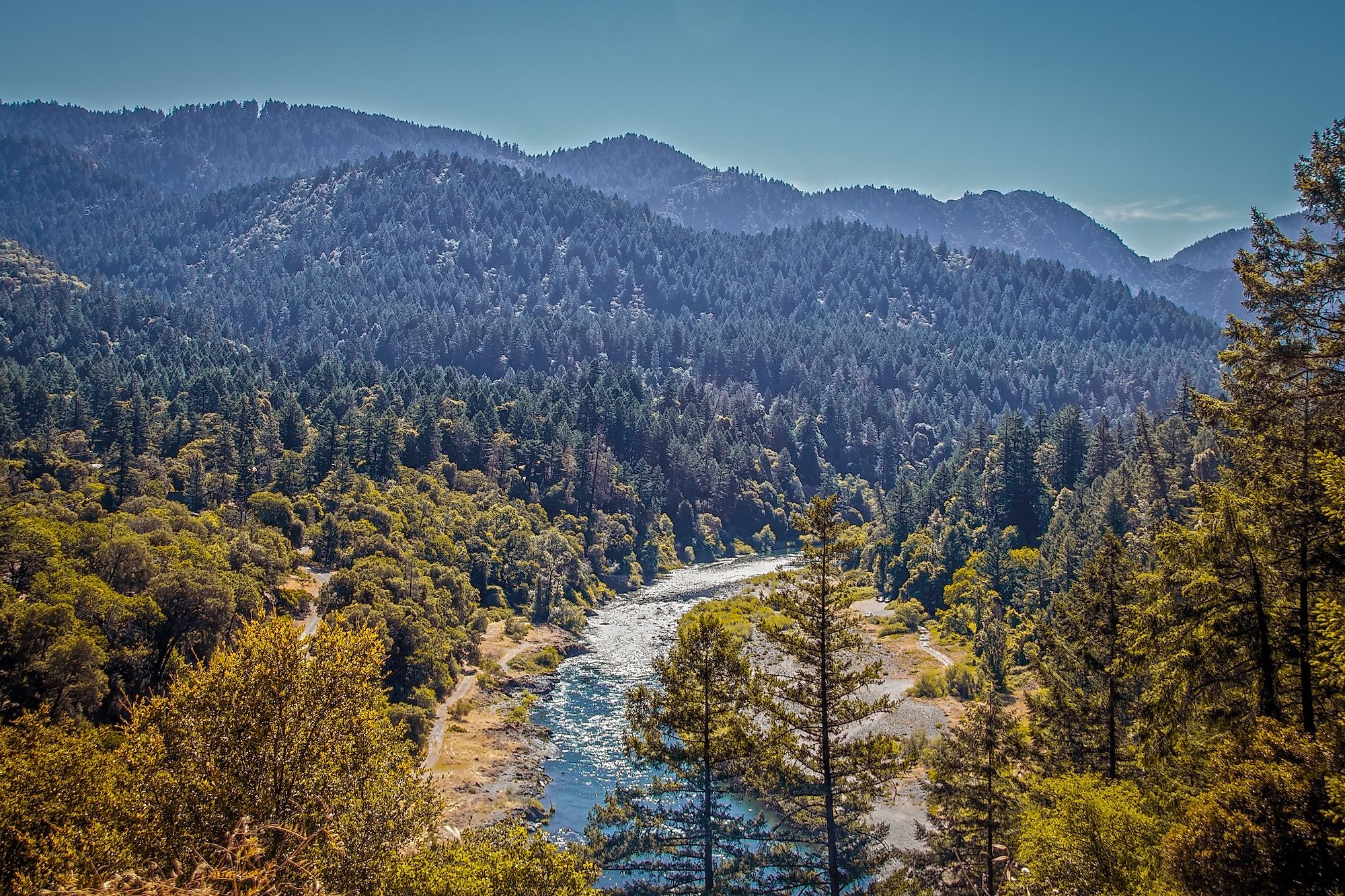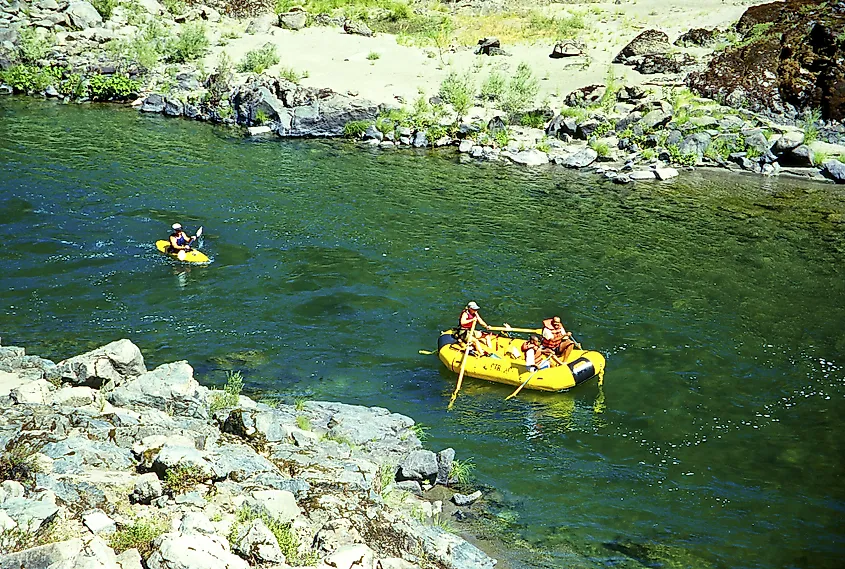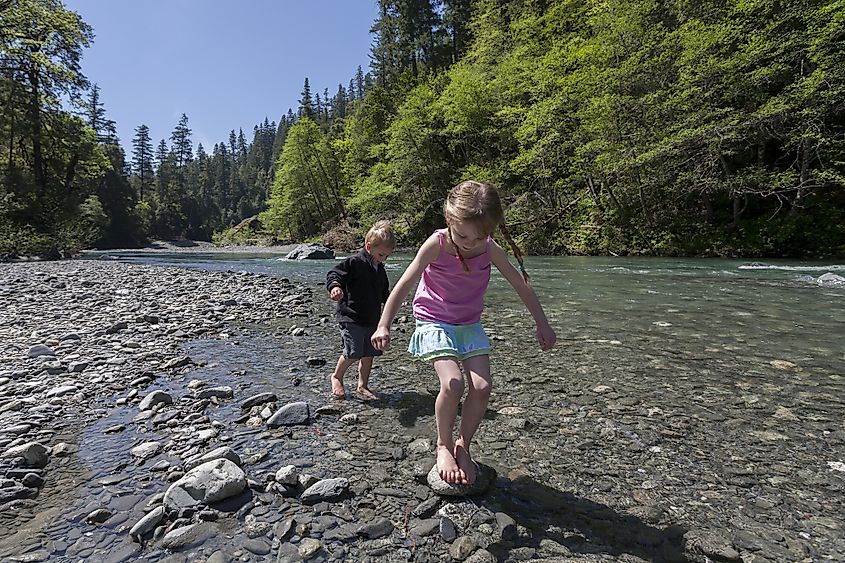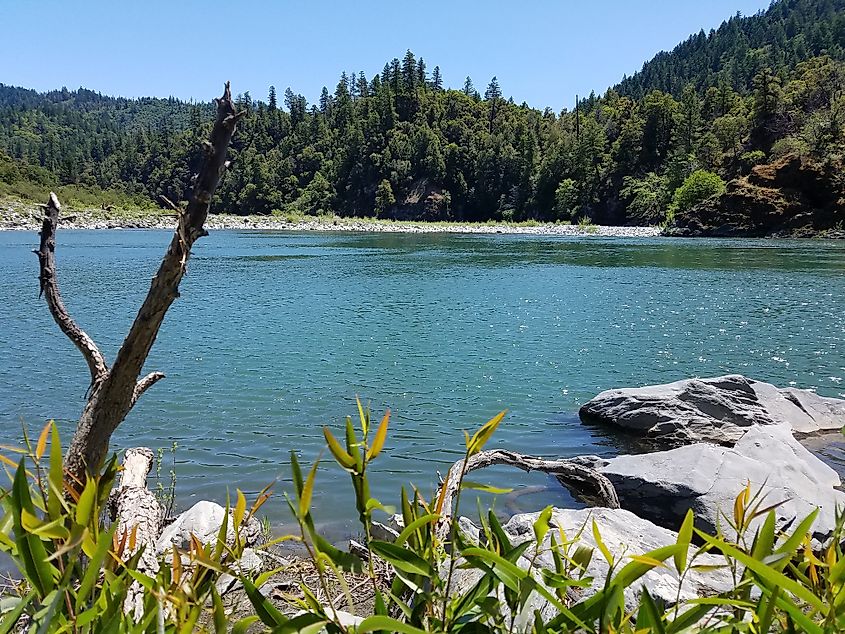
Trinity River, California
The Trinity River is a major river in the northwest of California in the United States of America and is the principal tributary of the Klamath River. It is initially called the Hoopa or Hupa by the Yurok and hun' by the Natinixwe/Hupa people. The Trinity River travels 266 km through the Klamath Mountains and Coast Ranges, with a 7800 square km of watershed area near Humboldt and Trinity Counties. Designated a National Wild Scenic River, it flows through tight canyons and mountain meadows along most of its course.
The Course Of The Trinity River

The Trinity River begins deep in the Scott Mountains at the confluence of Chilcoot Creek and High Camp Creek in Trinity County. The river travels south through a deep valley between the Salmon Mountains to the west and the Trinity Mountains to the east, joining the Coffee Creek before reaching Trinity Lake, a large reservoir created behind the Trinity Dam.
Both Stuart Fork and the East Fork also flow into the reservoir. As part of the Central Valley Project, a smaller dam, Lewiston Dam, located just below Trinity Dam, diverts part of the Trinity River through a hydroelectric plant to the Sacramento River Basin. It provides irrigation water to California's Central Valley.
Below Lewiston Dam, the river crosses the towns of Lewiston and Douglas City. It turns west, passing a few kilometers of Weaverville, the main population center of the area and the seat of Trinity County. Trinity River then turns northwest, past Junction City, and meets the North Fork Trinity River at Helena. It continues west, passes Big Bar's former mining settlement, and enters a deep gorge. At Burnt Ranch, the Trinity River receives the New River from the North, and its main tributary enters from the south at Salyer the South Fork, nearly doubling the river's flow.

The Trinity River turns sharply north at the confluence of the South Fork and enters Humboldt County. The river flows through Hoopa Valley Reservation, past the towns of Hoopa and Willow Creek. It meets the Klamath River at Weitchpec above the mouth of the larger river on the Pacific Ocean. The confluence shows the point where the Klamath changes course from its generally southwesterly route to flow north towards the sea.
Geology Of The Trinity River Basin
During the Cretaceous and Jurassic periods, mountains have been formed at a higher altitude than those found in the area today. Today, the terrain that makes up the Trinity River basin began to take form over 200 million years ago due to the collision of several exotic terranes with the North American Plate. This collision caused uplift of the seafloor under what is nowadays northwestern California.
A wide variety of rocks can be found in the Trinity River area. It includes chert, gabbro, diorite, granite, limestone, sandstone, serpentine, schist, and marble. Gold-bearing quartz veins are common in local metamorphic rock formations.
Brief History

The Wintu people were the first indigenous people to inhabit the Trinity River area. There were nine major groups of them and spread across the Trinity, Upper Sacramento, and McCloud River valley, in addition to some parts of the South Fork Trinity River and its tributary Hayfork Creek. Other indigenous people lived around the Trinity River including The Hupa , The Tsnungwe people, and The Chimariko people.
The Wintu people lived in villages along the Trinity River. Each village was independent and led by a chief of around 150 people. The villagers interacted through trade with each other and other neighboring tribes, including Shasta, Nomlaki, and Achomawi.
The Wintu people came into frequent contact with European explorers, settlers, and traders as they were near the trade routes in and around the Central Valley. Those encounters were initially peaceful, but a malaria epidemic in the 1830s was accidentally caught from the Hudson’s Bay Company fur trappers, which led to the decimation of the Wintu population in addition to many other Central Valley tribes. This peaceful contact did not last long as the following decades witnessed major conflicts between the remaining Wintu and settlers as more settlers moved into the area and occupied many of the Wintu’s traditional lands. In 1846, one of the deadliest massacres occurred when soldiers led by John C. Fremont killed 175 people who belonged to Wintu, Yana, and Maidu. Later in 1850, 100 of the Trinity Wintu indigenous people perished after being given poisoned food by white settlers. By 1910, the Wintu population declined to a mere 1000 from an estimated 12000 prior to European contact.
In 1828, Jedediah Smith’s expedition to northwestern California were some of the first Europeans to explore the Trinity River county. The expedition departed from Sacramento Valley Smith passed over the Klamath Mountains, and arrived at what is now Hayfork Creek on April 18. The expedition followed the creek to the South Fork and then to the Trinity River and the Klamath River.
After James Marshall discovered gold at Sutter’s Mill, which started the California Gold Rush, Major Reading discovered gold on the Trinity River in July 1848. The find attracted thousands of miners who moved to the area and created boomtowns such as Francis, Douglas City, Lewiston, and Lake City. The mining activity was initially concentrated in the upper eastern valleys of the Trinity River around Weaverville because the hostile Native Americans prevented transporting equipment and supplies to places further west.
Fisheries In The Trinity River
The Trinity River is famous for its salmon and steelhead fishing by drift boat or walk-in riverside spots. The most sought-after gamefish in the river's system is the Chinook salmon. Spring-run salmon enter the river in May, providing trophy fishing through November. Although not being native, brown trout were heavily stocked until the late 1970s. Today, a self-sustaining population remains in the upper river, providing fly and bait fishing opportunities.











